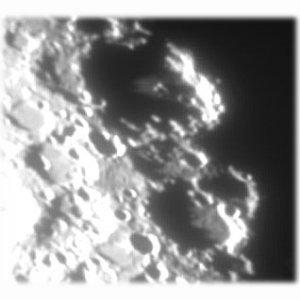


I think this is a new Ray in Lagalla.It was imaged again under very poor seeing 2-3/10 through a 120mm F 8.3 refractor with a PC-23 video camera ,the images were recorded on DVD.Imaged on 12/21/04 2:44 UT.Look foward to hearing from you.Robert - Griffith Observatory See: http://www.geocities.com/xetor_2000/122104.html
 |
 |
 |
The Initial Predictions, Using Data in Original Reporting
Site Longitude = +118.283
Site Latitude = +34.146
Site Elevation = +137.000
Reproducing Lighting For: 2004/12/21 at 02:44 U.T.
Desired Solar Altitude = +0.677(Rising), Azimuth = +91.227
Feature = LAGALLA
Feature Longitude: = -22.500
Feature Latitude: = -44.600
Average Co-longitude = 23.451
Moon's Altitude Restricted = N
In the Time column, D=Daylight, T=Twilight
---- Moon's ---- -- Earth's --
Topocentric Topocentric -------- Sun's --------
UT Date Time Alt° Semi-Diam'' Long° Lat° Colong° Lat° Azim°
2004/12/21 02:44 +63.438 928.03 +6.856 +0.614 022.121 -1.350 +91.227
Crater Description:
Lagalla - -281,-700: A peculiar and pear-shaped formation to the south-east of Wilhelm (, with broad, terraced walls, broken on the north by the crater B, to the north of which is another crater. The narrow south end of the floor is occupied by a crater, while on the other part of the floor is a central craterlet in the middle of an old ring. A cleft crosses the floor just south of the central craterlet and runs to a crater, 5, on the north-east wall. On the outer west are two great craters, slightly encroaching on the wall of Lagalla; these are A and K. A encroaches upon K, and K itself encroaches upon the wall of Wilhelm I. To the south-east is the crater, P, a large, low ring, W, and a crater row beyond the latter. (Wilkins and Moore, The Moon, Faber & Faber, 1955)

